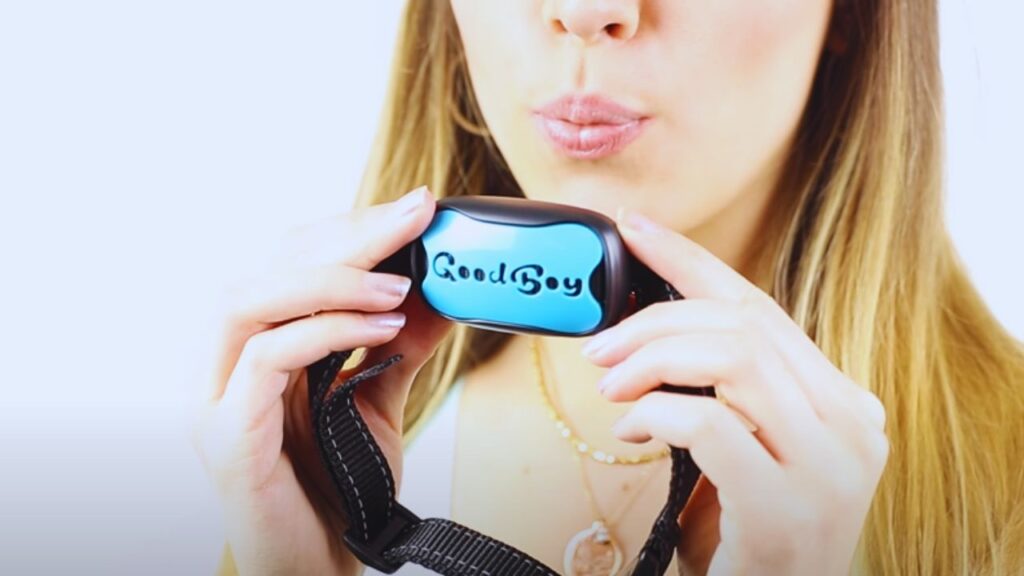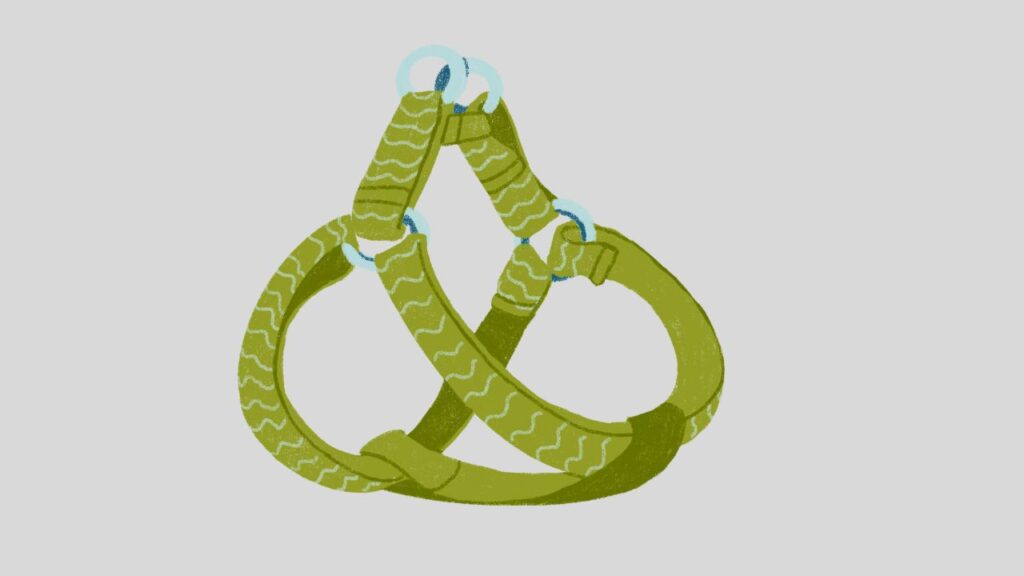As a dedicated dog owner, I’ve always strived to provide the best care and training for my beloved canine companion, Max. Like many pet parents, I encountered behavioral challenges that left me searching for effective training solutions. So, are shock collars bad for dogs?
One tool that frequently came up in my research was the shock collar. Initially intrigued by its promise to curb unwanted behaviors, I decided to delve deeper into understanding whether shock collars are truly beneficial or potentially harmful to dogs like Max.
For step-by-step instructions on properly fitting a collar on your Bedlington Terrier, visit this comprehensive guide on how to put collars on Bedlington Terrier.
Blog Highlights
ToggleQuick FAQs: Are Shock Collars Bad for Dogs
Why Shock Collars Are Considered Harmful: My Personal Observations

When I first considered using a shock collar for Max, I was desperate to address his persistent barking and pulling on the leash during walks. However, after researching and consulting with professionals, I realized that shock collars come with significant drawbacks:
- Pain and Discomfort: Shock collars deliver an electric stimulus that can range from mild to painful. I noticed that even the mildest settings caused Max visible discomfort, making him anxious during training sessions.
- Psychological Impact: The negative reinforcement from the shocks led to increased anxiety in Max. He became more fearful and less confident, which was heartbreaking to witness.
- Ineffective Long-Term Training: While the shock collar did reduce Max’s unwanted behaviors temporarily, the underlying issues remained unresolved. Once the collar was removed, the behaviors resurfaced, indicating that the collar didn’t address the root causes.
- Damage to the Human-Dog Bond: Using the shock collar strained the trust between Max and me. He began to associate training with fear, making our interactions less enjoyable and more stressful.
- Risk of Physical Injury: I was concerned about the potential for burns or sores on Max’s neck, especially if the collar was left on for extended periods or used improperly.
- Lack of Regulation: The inconsistent regulations surrounding shock collars made me uneasy about their safety and ethical use. Without clear guidelines, the risk of misuse and overuse was too high.
These observations convinced me that shock collars were not the right choice for Max or any other dog seeking training and companionship.
For detailed guidance on ensuring the perfect collar fit for your St. Bernard, check out the Best Practices for St. Bernard Collar Adjustment to keep your dog comfortable and secure.
Types of Shock Collars: Understanding the Options
Before making any decisions, it was essential to understand the different types of shock collars available:
Static Shock Collars
These deliver a static electric shock to correct behavior. The intensity can usually be adjusted, but even low settings can be distressing for dogs.

Vibration Collars
Instead of shocks, these collars use vibrations to get the dog’s attention. While less harmful, they can still cause stress and confusion.

Spray Collars

These release a burst of citronella spray or air when unwanted behavior is detected. They are often seen as a more humane alternative but may still cause discomfort.
Ultrasonic Collars

These emit a high-pitched sound that is unpleasant to dogs but inaudible to humans. They aim to discourage unwanted behaviors without physical contact.
Remote Training Collars

These allow the owner to control the delivery of stimuli remotely, offering more flexibility in training. However, the potential for misuse remains a concern.
Each type has its own set of advantages and disadvantages, but the potential for harm is a common thread across all varieties. Understanding these differences helped me make an informed decision about whether to proceed with any form of electronic training aid.
Ensure your Newfoundland’s comfort and security with expert tips on how to ensure a safe collar fit for Newfoundland.
How Shock Collars Work: The Mechanism Behind the Controversy

Shock collars operate on the principle of operant conditioning, specifically using negative reinforcement and punishment to modify behavior. Here’s a breakdown of how they function:
- Triggering the Stimulus: When Max exhibits an unwanted behavior, such as excessive barking or pulling on the leash, the owner activates the collar manually or through an automated system triggered by certain actions.
- Delivery of Stimulus: The collar delivers an electric shock, vibration, or another aversive stimulus to the dog’s neck.
- Association: Max associates the unpleasant stimulus with the unwanted behavior, ideally leading to the cessation of that behavior.
- Repetition: Consistent use aims to reinforce the association, gradually reducing or eliminating the unwanted behavior.
While this method can lead to immediate compliance, it does not promote positive learning and can have detrimental effects on the dog’s well-being, as I discovered through my experience with Max.
Potential Risks and Side Effects: What I Learned from Max

Using a shock collar on Max exposed several risks and side effects that made me reconsider its use:
- Physical Injury: Even at the lowest settings, the shock collar caused redness and slight irritation on Max’s neck. Prolonged use could have led to more severe injuries.
- Behavioral Issues: Max developed signs of anxiety and became more reactive. The fear of the shock made him hesitant and less willing to engage during training sessions.
- Reduced Trust: The negative experiences associated with the collar eroded the trust between Max and me. He began to avoid me during walks, fearing the next shock.
- Inconsistent Training: The reliance on pain for training resulted in inconsistent outcomes. Max only responded when the collar was active, undermining the overall effectiveness of the training.
- Escalation of Aggression: In some instances, Max became more defensive and aggressive, possibly as a response to the perceived threat of the shocks.
- Stress and Anxiety: Continuous exposure to the aversive stimulus led to chronic stress, affecting Max’s overall health and happiness.
- Misuse and Overuse: Without proper training on how to use the collar, there was a high risk of misuse, which could exacerbate the negative effects on Max.
These risks highlighted the need for alternative, more humane training methods that prioritize Max’s well-being and our relationship.
Discover the ideal fit by learning what size collar for Newfoundland dog to ensure your pet’s comfort and safety.
Alternative Training Methods: Positive Reinforcement as a Better Choice

After witnessing the adverse effects of the shock collar on Max, I sought out alternative training methods that would foster a positive and trusting relationship. Here are the methods that worked best for us:
- Positive Reinforcement: Rewarding Max with treats, praise, or play when he exhibited desired behaviors encouraged him to repeat those actions. This method strengthened our bond and made training enjoyable for both of us.
- Clicker Training: Using a clicker to mark desired behaviors followed by rewards helped in clear communication and effective training. Max quickly learned to associate the click with positive outcomes.
- Harnesses and Gentle Leaders: Instead of using a collar to control Max, a harness distributed pressure evenly across his chest and back, reducing the risk of neck strain and promoting a more comfortable walking experience.
- Behavioral Training: Working with a professional trainer who employed humane techniques addressed the root causes of Max’s unwanted behaviors, leading to long-term solutions.
- Environmental Management: Adjusting Max’s environment to prevent unwanted behaviors, such as providing ample exercise and mental stimulation, helped reduce instances of barking and pulling.
- Consistency and Patience: Regular training sessions with consistent commands and expectations built a strong, trust-based relationship between Max and me.
These methods not only resolved the behavioral issues but also enhanced our mutual trust and understanding, proving that positive reinforcement is a far superior approach to training.
How to Choose the Right Training Tools: My Recommendations
Selecting the appropriate training tools is crucial for effective and humane training. Based on my experience with Max, here are some factors to consider:
- Dog’s Temperament: Understanding Max’s personality and behavior helped me choose methods that suited his unique needs. Every dog is different, so tailor your approach accordingly.
- Training Goals: Clearly defining the behaviors you aim to encourage or discourage allowed me to select the most suitable tools and techniques for Max’s specific challenges.
- Professional Guidance: Consulting with a certified dog trainer provided personalized recommendations and strategies that were effective and compassionate.
- Safety and Comfort: Ensuring that any training tool used did not cause physical harm or undue stress was paramount. Tools like harnesses and positive reinforcement methods prioritized Max’s well-being.
- Effectiveness: Choosing methods with proven success rates and supported by positive outcomes ensured that the training was both effective and sustainable.
- Owner’s Commitment: Effective training requires consistency and patience. Selecting methods that aligned with my ability to commit to regular training sessions was essential for long-term success.
By carefully evaluating these factors, I was able to create a training regimen that promoted positive behavior while ensuring Max’s comfort and happiness.
For expert tips on how to fit a collar on a Belgian Shepherd, this guide offers simple steps to ensure your dog’s collar fits securely and comfortably.
Common Mistakes When Considering Shock Collars: Lessons from My Experience
Reflecting on my journey with Max, I identified several common mistakes that dog owners should avoid when considering shock collars:
- Using Excessive Intensity: Delivering shocks that were too strong caused unnecessary pain and fear in Max, exacerbating his behavioral issues rather than resolving them.
- Inconsistent Use: Irregular application of the collar led to confusion and inconsistent training outcomes. Consistency is key in any training method.
- Lack of Proper Training: Without a thorough understanding of how to use the collar correctly, I risked failing to achieve desired outcomes and potentially harming Max.
- Neglecting Positive Reinforcement: Relying solely on aversive methods ignored the benefits of positive reinforcement, which are crucial for building trust and encouraging desired behaviors.
- Using for Inappropriate Behaviors: Applying shocks for minor or natural behaviors created unnecessary stress and fear in Max, making him more anxious and less responsive.
- Ignoring the Dog’s Response: Failing to monitor and adjust based on Max’s reactions led to prolonged discomfort and behavioral deterioration.
- Not Seeking Professional Help: Attempting to train without professional guidance increased the risk of misuse and ineffective training, highlighting the importance of seeking expert advice.
Avoiding these mistakes is essential for ensuring the safety and well-being of your dog while pursuing effective training outcomes.
Key Insights and Statistics: Understanding the Broader Context
My personal experience with Max is supported by broader research and statistics that highlight the concerns surrounding shock collars:
- Prevalence: Despite controversy, millions of dogs worldwide are fitted with shock collars, particularly in hunting and herding contexts.
- Effectiveness: Studies indicate that while shock collars may produce immediate compliance, they often fail to instill long-term behavioral changes. My experience with Max mirrored this, as behaviors resurfaced once the collar was removed.
- Behavioral Impact: Research shows that dogs trained with aversive methods like shock collars exhibit higher levels of anxiety and aggression compared to those trained with positive reinforcement. Max displayed signs of anxiety and fear, aligning with these findings.
- Recovery Rates: Dogs subjected to shock collar training may require extensive rehabilitation to overcome fear and trust issues. Transitioning Max to positive reinforcement methods required time and patience to rebuild our relationship.
- Legal Trends: Several countries and regions have banned or restricted the use of shock collars, reflecting growing concerns about animal welfare. This trend influenced my decision to seek alternative training methods for Max.
- Veterinary Opinions: A significant majority of veterinarians and animal behaviorists oppose the use of shock collars, advocating for humane training methods instead. Professional advice was instrumental in guiding me away from using shock collars on Max.
These insights underscore the growing consensus against shock collars and the shift towards more ethical training practices that prioritize the well-being of dogs.
For detailed guidance on selecting the correct collar size for a Belgian Shepherd, this article provides essential tips to ensure your dog’s comfort and safety.
Training Tips: Positive Reinforcement for Effective Behavior Modification
Transitioning to positive reinforcement-based training significantly improved Max’s behavior and our relationship. Here are the essential tips that worked for us:
- Identify Desired Behaviors: Clearly defining the behaviors I wanted to encourage, such as sitting calmly, reduced barking, and walking without pulling, allowed me to focus my training efforts effectively.
- Use Rewards Strategically: Offering treats, praise, or play as immediate rewards when Max exhibited the desired behavior reinforced his positive actions. This strategy made training enjoyable and motivating for him.
- Be Consistent: Applying rewards consistently helped Max understand the connection between his behavior and the positive outcomes, leading to more reliable responses.
- Keep Training Sessions Short and Engaging: Short, frequent sessions prevented Max from becoming bored or overwhelmed, maintaining his focus and enthusiasm for training.
- Gradually Increase Challenges: As Max mastered certain behaviors, introducing more complex tasks kept him engaged and continued his development, ensuring ongoing progress.
- Avoid Punishment-Based Methods: Focusing on rewarding positive behaviors rather than punishing unwanted ones builds trust and cooperation between us, fostering a stronger bond.
- Monitor Progress and Adjust: Regularly assessing Max’s progress and modifying the training approach as needed ensured that the methods remained effective and suited his evolving needs.
- Seek Professional Guidance: Enlisting the help of a certified dog trainer provided personalized strategies and support, enhancing the overall effectiveness of the training program.
By emphasizing positive reinforcement, I created a supportive and encouraging training environment that fostered lasting behavioral improvements in Max.
Conclusion: Choosing the Best for Your Dog
My journey with Max has taught me that while shock collars may offer a quick fix for behavioral issues, the potential for physical harm, psychological distress, and damaged trust makes them a questionable choice. The negative experiences I witnessed reinforced the importance of prioritizing my dog’s well-being through humane and effective training methods.
Alternative training approaches, rooted in positive reinforcement and mutual respect, not only resolved Max’s behavioral challenges but also strengthened the bond we share. Investing time and effort into compassionate training techniques yields long-term benefits, promoting a well-behaved, confident, and happy canine companion without compromising their well-being.
If you’re grappling with training challenges, I encourage you to explore positive reinforcement methods and seek professional guidance. Your dog deserves a training experience that fosters trust, cooperation, and joy for both of you. Hope so, now you know, are shock collars bad for dogs.
Do you have experiences or insights on training methods for your dog? Share your thoughts in the comments below!
Discover the perfect collar size for an Anatolian Shepherd Dog to ensure comfort and security for your furry friend.
Additional Resources
- American Veterinary Society of Animal Behavior (AVSAB): AVSAB Position Statement on Shock Collars
- Humane Society of the United States: Dog Training: Positive Reinforcement
- Association of Professional Dog Trainers (APDT): APDT Training Resources
Key Takeaways
- Shock collars deliver painful stimuli that can harm your dog’s physical and mental health.
- Alternative training methods like positive reinforcement are more humane and effective in the long run.
- Proper training strengthens the bond between you and your dog, fostering trust and cooperation.
- Consulting with professional trainers can provide personalized strategies for effective behavior modification.








